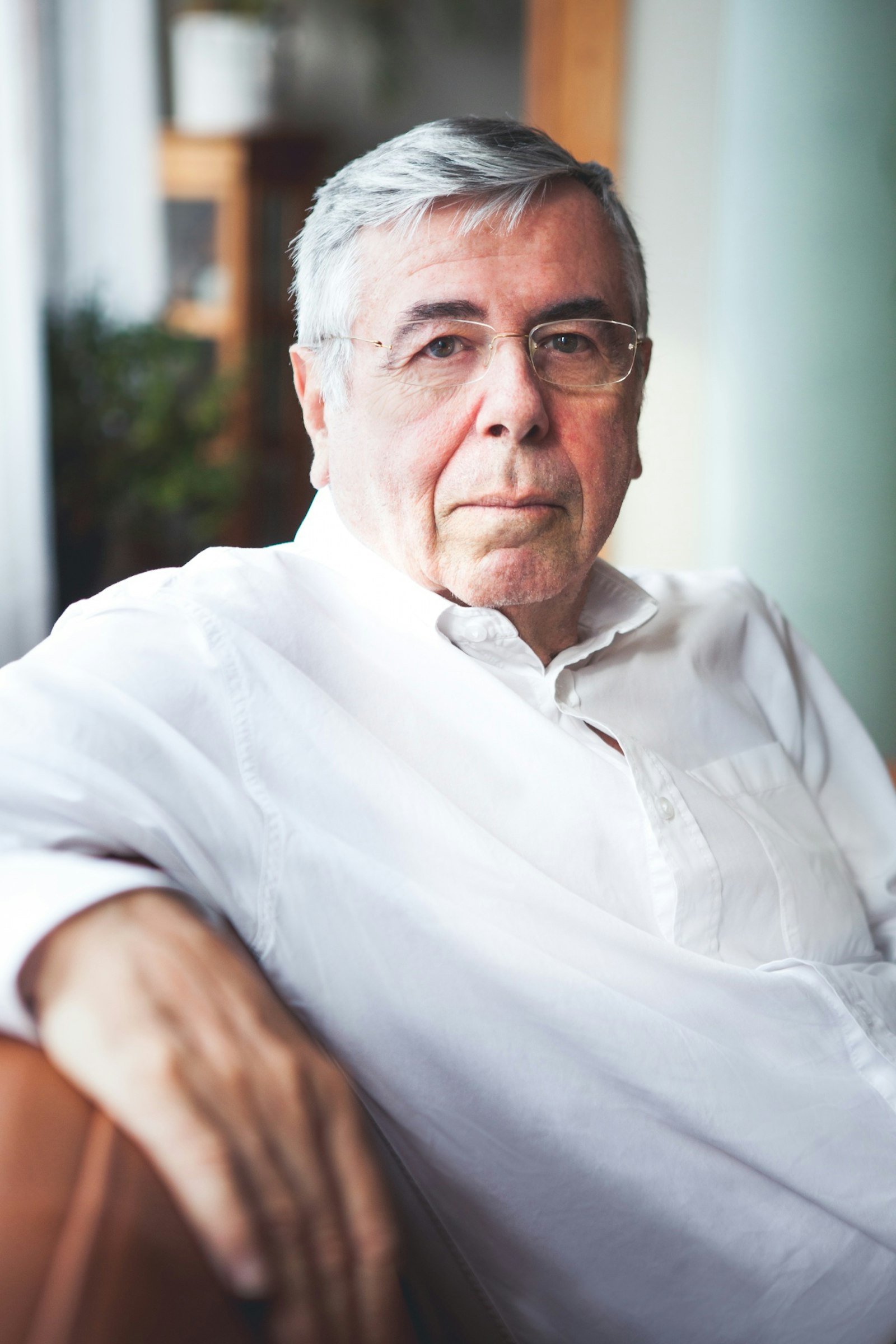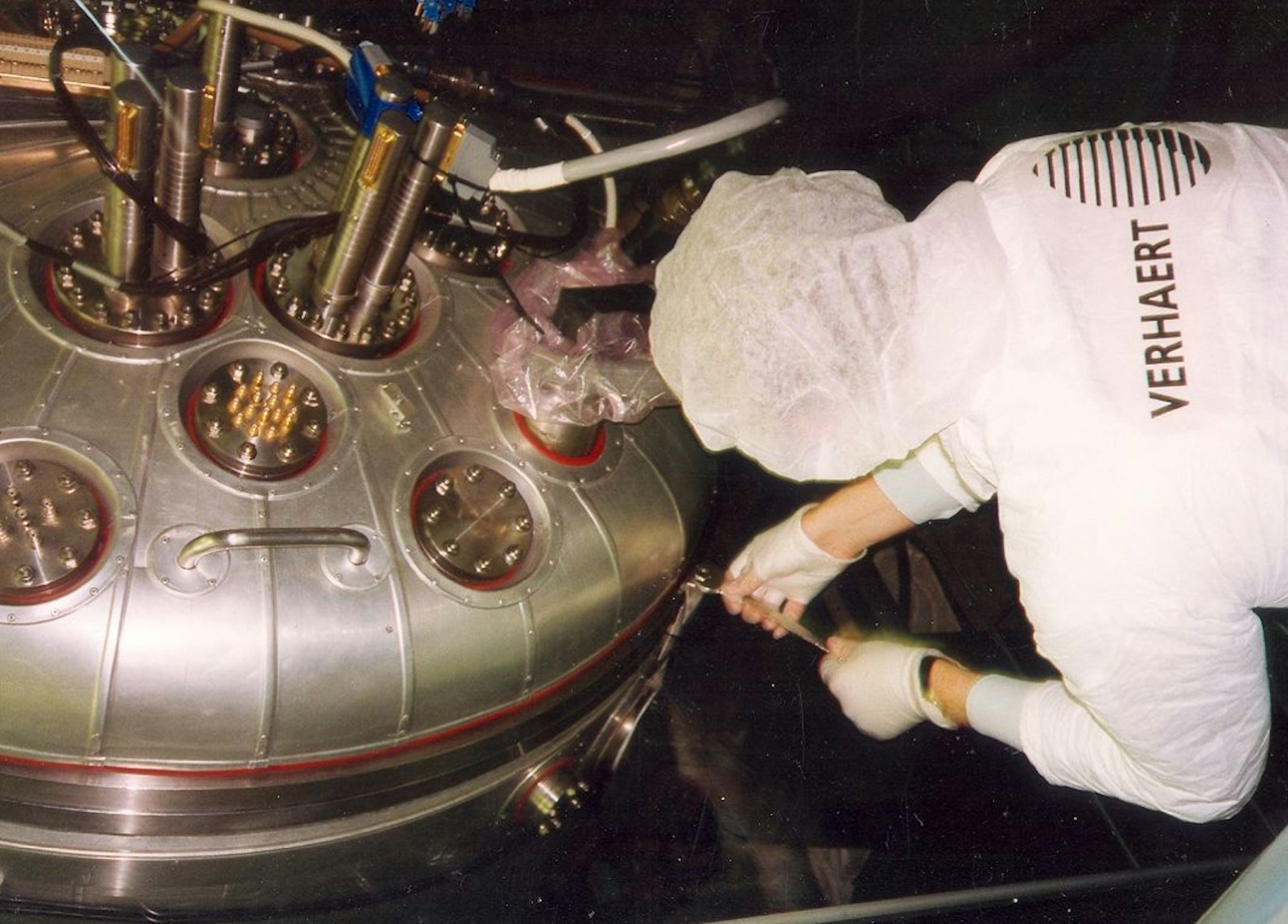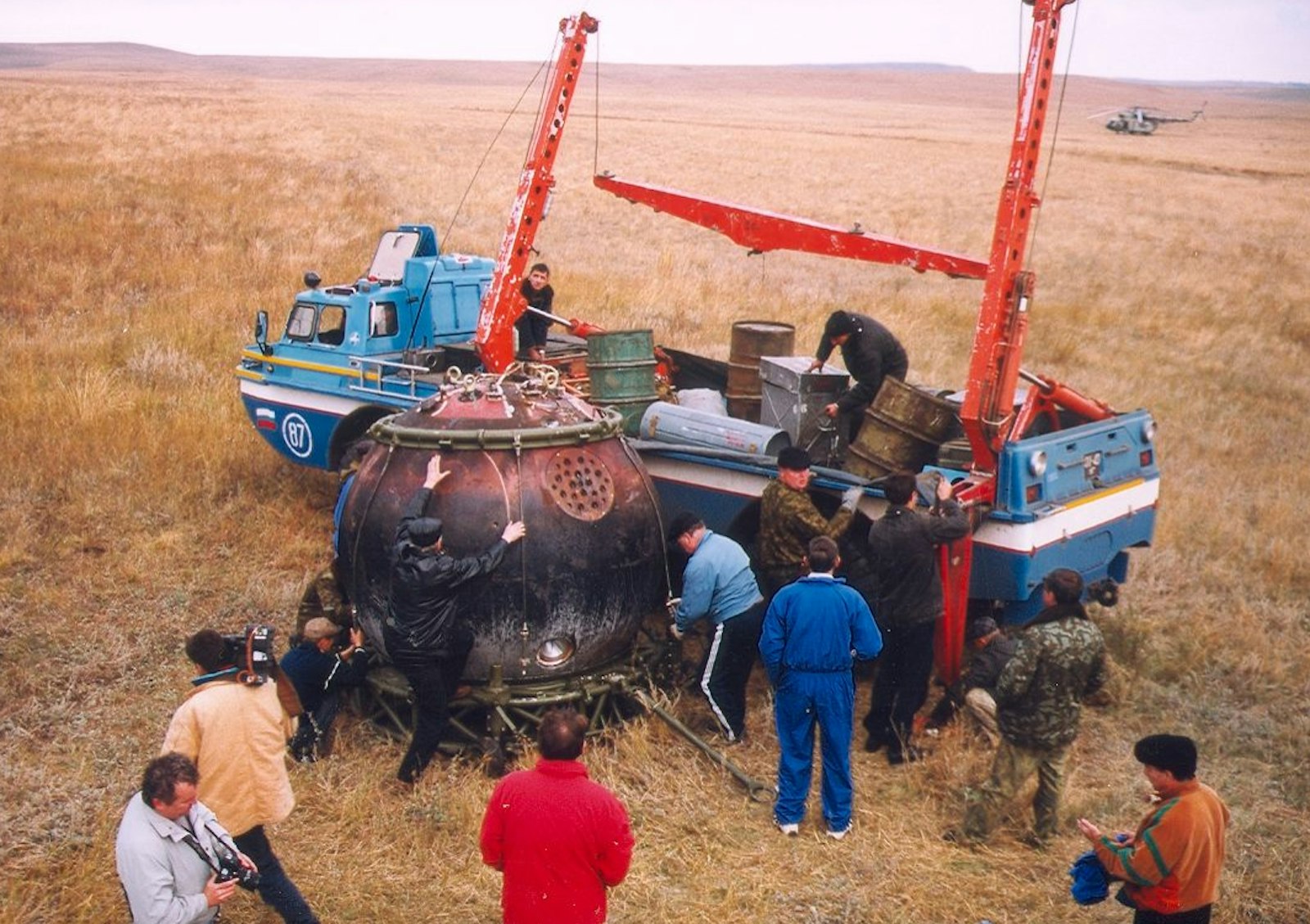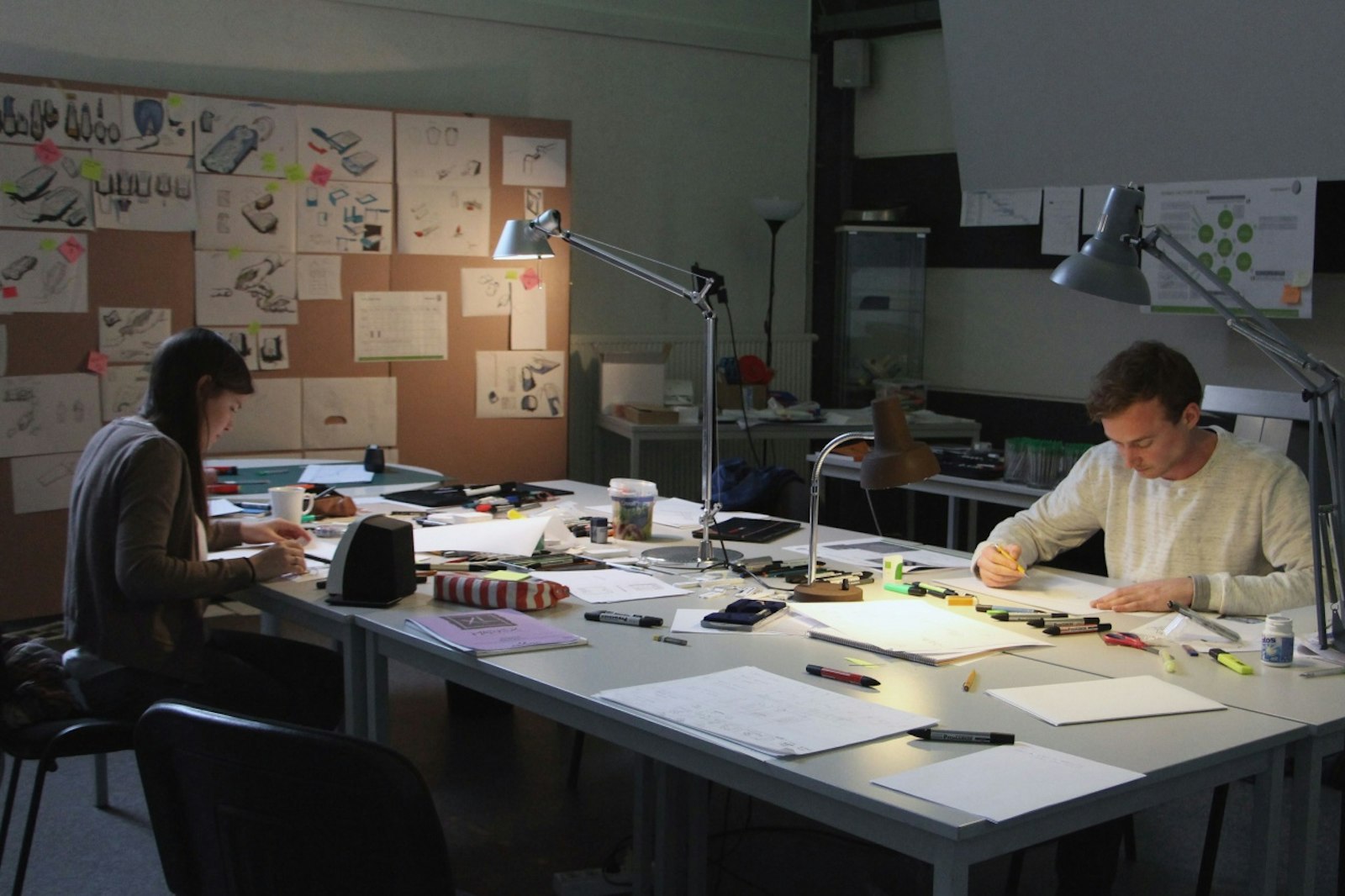de Velde
Paul Verhaert
1969. The revolutionary year in which Paul Verhaert (°1945) set up Verhaert Company. The designer, who graduated from Eindhoven Design Academy in 1968, is a service designer through and through.
L'homme fait l'amout avec les choses
It has always been his mission to think up innovative new products and services for other companies. This particular mind-set has resulted in more than 500 innovative products as well as partnerships in all kinds of industries, even space exploration. Verhaert has been a non-executive director at Agoria, a lecturer at UAMS (University of Antwerp Management School) and a professor at Antwerp University College.
It was around May 1968 when the young Paul Verhaert came across the slogan L’homme fait l’amour avec les choses graffitied on a wall in Paris. It encapsulated something he felt deep inside and would spend the rest of his career exploring. For him, design is about giving an object a sort of added value that separates it from the surrounding reality and allows it to enact that reality. When designing new products he always saw things from the user’s perspective so that the final object guaranteed the user optimum interplay with reality.
Paul Verhaert’s name won’t ring many bells with the general public, though he is by far Flanders’s most prolific product designer. It might raise an eyebrow or cause a quizzical look. Paul Verhaert has never striven to become a household name. He never seeks the limelight and never shouts his opinions from the rooftops.
He founded his business on the idea that it should be capable of operating without him. He thought it would be counter-productive, economically, if his business were entwined with his public designer status. This has given the people in his organisation the stature they deserve and they have always had room to grow and develop. Paul Verhaert has always seen creativity as a delicate flower, which shouldn’t be teased too hard or you might uproot it.
Paul Verhaert has spent the whole of his career look- ing to create added value from that generosity, based on critical empathy coupled with a strong drive and a keen sense of opportunity. He is discreet and committed, leaves little to chance and employs critical (self) reflection.
In other words, he has always been more than just a designer.
Building
From the outset Paul Verhaert wanted his business to be a standalone entity, one that would operate as independently as possible. To make it easy he had intended to reject anything that might get in the way of his passing it on. In the initial years after starting the business he explored an associative model, but it soon became clear that this was always going to involve very deep ties. When, after two years, he decided to break the association up it felt like he was ending a marriage.
It is not possible to take an enterprise from nothing to more than 150 employees, to set up departments in other countries and push the boundaries in all kinds of industries, like space and education, if you don’t keep your focus. Over the decades Verhaert has always readjusted that focus in line with his keen analysis of markets with the potential for growth. In the 70s he concentrated on the design of medical instruments and in the 80s he caught the first wave of digitalisation, which actually washed over the design process itself. In the closing decade of the last century he took that knowledge further, inspired by the rise of software and electronics, to gain an overall knowledge of systems. The ideal market for this knowhow was in microgravity research instruments for the space industry. In the opening decade of this century he went all out for the space industry and began designing and supplying satellites. In 2005 he hived off the space exploration department and sold it to QinetiQ. Since then his innovative visions for new product management and technology transfer have been the source of many new products.
Though he immersed himself in these projects Paul Verhaert knew that it may have been difficult for his nearest and dearest at times. He felt frustrated, as many entrepreneurs do, about getting such little time with his children when they attended school. But Paul Verhaert isn’t one to look back with regret.
During that busy all-round expansion he hadn’t noticed that his twelve-year-old son Koen had set up a sort of shadow office at home, where he worked on his father’s projects in his own way. In other words, he was more or less fated to follow in his father’s footsteps. Koen Verhaert’s decision to study product development in Antwerp, where his father taught, seemed too good to be true. Within a few months he applied to the Design Academy in Eindhoven, without his father’s knowledge. His father then advised him to get an MBA before taking up a position in the company.
His advice to combine business studies with design had a lot to do with his thoughts on his son’s role as his successor. If he was indeed the future of the company, his first job would be to gain moral acceptance and respect from the employees. This he couldn’t do by being ‘the boss’s son’, but by having management skills of his own combined with a sound understanding of industrial product development.
At one point Koen’s twin sister, Judith, said she wanted to join the business. As a father, Paul Verhaert was both touched and amazed, because he thought she would employ her talents in an entirely different field. Realising that she would do better in a coaching environment than in business, Judith finally decided to follow another career. Learning to deal with issues like this, which have an impact on all kinds of levels, was Paul’s most challenging test as a father.
Designing
As Paul Verhaert sees it, design means designing, period. The real question is what you want to design, more pertinently the result you want for the design. The answer lies in Paul’s ideas of added value. This added value usually comes through a balance between the new qualities you want to invest in a product and the unwanted effects these qualities cause. For example, additional functions make the product so much more expensive or heavier. If these proportions persist through the design process they prevent the creation of added value. It is only when design disentangles the added quality
from the negative effects that the added value comes into play. It might be in the price, but it might equally be something on the user’s side; strategies differ from product to product.
The balance that guarantees the greatest added value lies in innovation, as Paul Verhaert sees it. Innovation can come from three directions: drawing on new insights in technology, seeing things from the user’s viewpoint or adapting the business model. If added value is to hit home right along the product chain, then all three components must stay in optimal proportion to each other through the process.
That is exactly what Paul Verhaert has been saying all this time and the very thing that has allowed him to make a difference. The added value of a manufactured product must survive the industrial value chain from supplier to distributor and ultimately consumer. The products must have enough added value in themselves to survive distribution across that chain, yet still be of benefit to the buyer. This approach to design requires constant monitoring throughout the process.
Enterprising
Although he didn’t study business, Paul Verhaert has been interested in how the businesses that employed him were managed and has learned much since starting out as a designer. This is something for which he is very grateful to his clients. He has also learned much from the things he has happened upon and that have forced him to trust his intuition. Space exploration was just such an opportunity and one that called for a huge effort of enterprise with no existing models to fall back on.
For this, Paul Verhaert developed a business model based on the ‘difference-making benefit’ that he could deliver by creating added value. The value he always invested in a product was not just to make his company money, but to create financial benefit for the whole chain dependent on that product. He sees this contribution as finding its ultimate expression in gross national product. Paul Verhaert’s most positive assertion is that if something has added value it will affect GNP sooner or later, and it is gross national product that supports social security, education, and so on. It might appear ambitious, but it makes sense.
The finest recognition of this vision came in 1998 when his company won the Oscar for Export awarded by the former Belgian Department of Foreign Trade. These Oscars were awarded to companies that had very significantly grown their exports, but his company had done nothing of the sort. Twenty years ago all his customers were in Flanders and nothing was exported at all. However, the added value of these products did account for a significant slice of Flemish exports. Via the added value invested in their design manufacturers acquired a sales argument that made them distinct from the competition. In turn, the producers turned that into new added value. The bottom line was to make money by creating goods on which others could make money.
Teaching
Paul Verhaert essentially symbolises the drive to grasp opportunities and make a fundamental difference. This was the case in the space industry, and it was also true in education. His interest in education was triggered by the fact that education gets you thinking: it is about what and how things are, and how you can convey that.
On the product development course in Antwerp he ran into a lot of preconceived ideas to begin with. For example, he had to demand greater focus on the role of and interactions between user, technology, engineering and business – a matrix which he took as the basis for his own business when searching for a new product.
When Paul Verhaert entered higher education he came up against a Bauhaus approach, with everything divided into departments, such as wood, metal and plastics. An important component joined the fold in the meantime, i.e. electronics and software, but it hadn’t quite broken through to the existing, somewhat stayed curriculum. A whole generation of product developers had graduated with no real knowledge of the latest developments. To incorporate it properly in the different departments it was necessary to come up with a holistic vision based on integration. To start with, product developers would have to learn to work in teams, thereby integrating various disciplines. In other words they had to specialise in integration, which isn’t possible without a sound knowledge of the basics in all subjects.
In the product development course Verhaert also had to show that design also involves management. In this integrated approach the designer brings all the professionals, who are working in their own fields, across the finishing line in unison. This is a special job, and Paul Verhaert was convinced that a production development course was the perfect place to learn it.
The jury on Paul Verhaert
“He is an icon, has employed more than 160 people and was a pioneer in many areas of engineering. He has led several outstanding projects and was an innovation researcher long before anyone else. What sets him apart is that he has never been a slave to aesthetics, but has doggedly sought the solutions that yield the greatest innovation. He is behind numerous technical developments, for example in space exploration, but furniture as well. He is the inventor of the mechanism in the modern-day reclining chair. No one in Belgium has ever attained his level of achievement, yet he has always remained in the background. It is time that he stepped out from the shadows. In 2002 Verhaert received a Henry van de Velde Company Award, but the jury is now presenting Paul with this Henry van de Velde Career Award for all his work in educational and industrial installations.”
Participating
‘If life holds rich rewards for you, give something back.’ If this is Paul Verhaert’s view of his role in education, it is also his definition of social commitment. His personal interpretation of social commitment says that, above all else, social participation must contribute to the self- generating industry we need to support our social model. When it came to social initiatives on the company’s side-lines he preferred to look at opportunities as and when they arose.
One of the most talked about has been the Baladharshan project in India. Paul Verhaert had promised, with quite some nerve, that he would deliver his first satellite not on the ground but in orbit, so he was left arranging the launch himself. To make it happen he made a deal with the Indian space organisation. The staff who later prepared the Indian launch discovered a community of adults and lots of children living in holes in the ground near the launch pad. Assistance was provided through Robert, a local who was worried about this community’s fate. Right from the beginning the project was very open, and everyone was free to get involved and actually did. The initiative, which included regular visits to the site, was entrusted to one of his company’s employees. Fifteen years later and the land is home to a well-ordered community with houses, as well as a school for three hundred children, a school bus and several workshops.
The project has come to an end and Robert, the local coordinator, has said that the community is now able to live independently. This is typical of every professional and educational project that Paul Verhaert has initiated.








